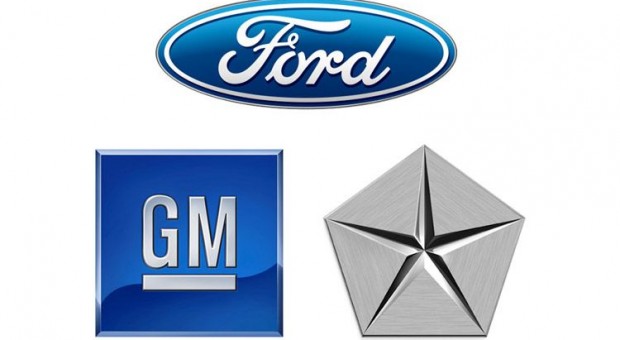
Ford, GM and Chrysler sold a total of 144,042 full-size pickups, up 29 percent from last April, driven by strength in the U.S. housing industry.
Overall sales grew 8.5 percent to nearly 1.3 million. While that’s the industry’s best April total since 2007, the pace slowed from the first three months of this year. On an annualized basis, April sales were 14.9 million, the first month below 15 million since October.
One reason for the slowdown: Toyota. The Japanese automaker’s U.S. sales dropped by 1 percent, or around 2,000 vehicles, from last April. Alec Gutierrez, a senior market analyst with Kelley Blue Book, said he and other analysts underestimated the impact that increasing competition is having on Toyota.
Popular Toyota vehicles like the Corolla and Camry sedans lost sales to fresher models like the Hyundai Elantra and the Ford Fusion. Gas prices – which are 30 cents cheaper than at this time last year – hurt sales of the Prius hybrid, down 21 percent. Toyota’s share of the market fell to 13.7 percent from 15 percent a year earlier, putting it behind GM and Ford.
Analysts still expect the industry to sell more than 15 million cars and trucks this year. Gutierrez is keeping his forecast at 15.3 million. That’s up from sales of 14.5 million last year. The most recent high was 17 million in 2005, while the trough was 10.4 million during the recession in 2009.
“We’re not reading too much” into the April number, Gutierrez said.
Ford, General Motors and Chrysler reported double-digit sales increases last month. Nissan led Japanese automakers with a gain of 23 percent, while Honda‘s sales rose 7 percent. Volkswagen sales dropped 10 percent, according to figures released Wednesday.
Detroit dominates the pickup segment, as U.S. buyers remain loyal to domestic brands despite efforts by foreign brands to win them over. Sales of Ford’s F-Series, the best-selling vehicle in the U.S., rose 24 percent, while Chevrolet Silverado sales rose 28 percent. Chrysler’s recently redesigned Ram pickup saw a 49-percent increase.
The gains bode well for second-quarter earnings, since pickups are among automakers’ most profitable vehicles.
Truck sales have been strong all year because of customers like Adrien McFrederick, who recently put down a deposit on a 2013 Ram 3500.
McFrederick, 35, owns a marble and tile business, and needed to replace the 2007 Silverado he kept while work was slow. He started looking at Rams late last year after he and his wife bought a Chrysler Town and Country minivan.
Businesses like McFrederick’s are getting a boost from a rise in home building, which increased 7 percent from February to March. A revived housing sector means higher sales of big pickups as companies and laborers return to the market. GM said its sales to small businesses rose 32 percent to 57,000 in April.
A different kind of business – natural gas drilling – is propelling sales at Chuck Eddy Jr.’s Chrysler-Dodge-Jeep-Ram dealership near Youngstown, Ohio. Eddy said energy industry workers from all over the country were coming in to buy trucks last month, keeping him in tight competition with a nearby Ford store.
“I’m selling heavy-duty trucks. We had people coming in from all over the country buying. We had a guy come in from Montana,” Eddy said.
Jesse Toprak, a senior analyst for the TrueCar.com auto pricing site, said full-size trucks made up around 11.5 percent of sales in April, up from around 10 percent last year. He expects them to top 12 percent of total sales – or nearly 2 million vehicles – by the fall of this year, when truck sales are usually strongest. Full-size truck sales peaked at 15 percent of the U.S. market in 2004.
The growth in truck sales shows underlying strength in the economy, Toprak said, since small businesses won’t buy them unless they’re confident in the future.
The U.S. economic recovery is far from smooth. Unemployment stands at a stubbornly high 7.6 percent and factory activity expanded at a slower pace in April, held back by weaker hiring and less company stockpiling.
But many factors favor car and truck sales. Interest rates are low – the average four-year loan on a new car is 2.4 percent, according to Bankrate.com. Credit is widely available, even to those with low scores. Buyers can currently get good trade-in value for their old cars. Lease deals are good. Gas prices have fallen since February, and ended April at $3.51 per gallon. And cars and trucks have reached a record average of 11 years old.
All that, plus record-setting stock markets and a recovery in home prices, is boosting sales in many segments of the auto market.
Source.
















